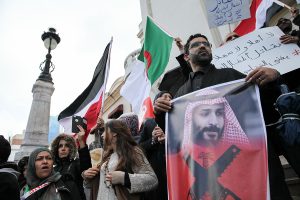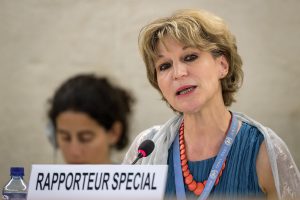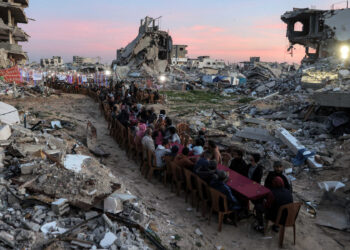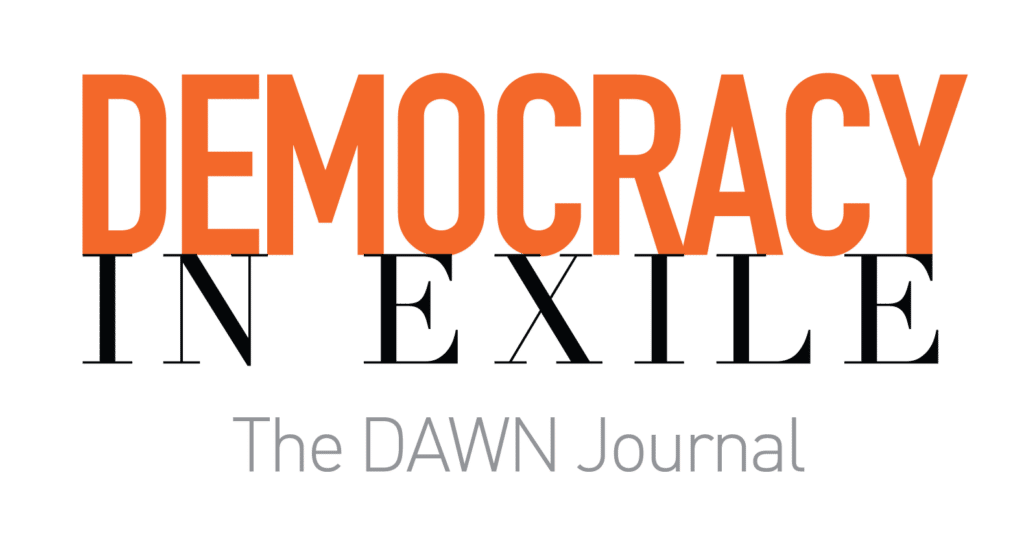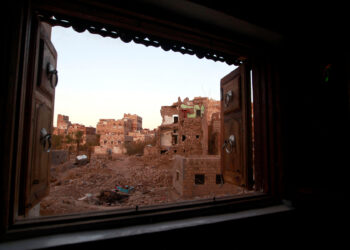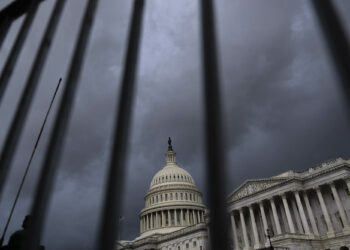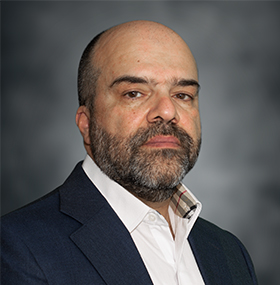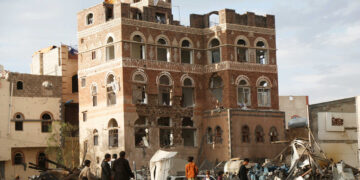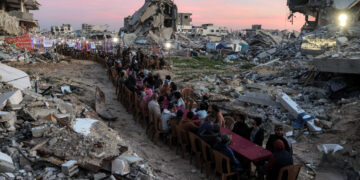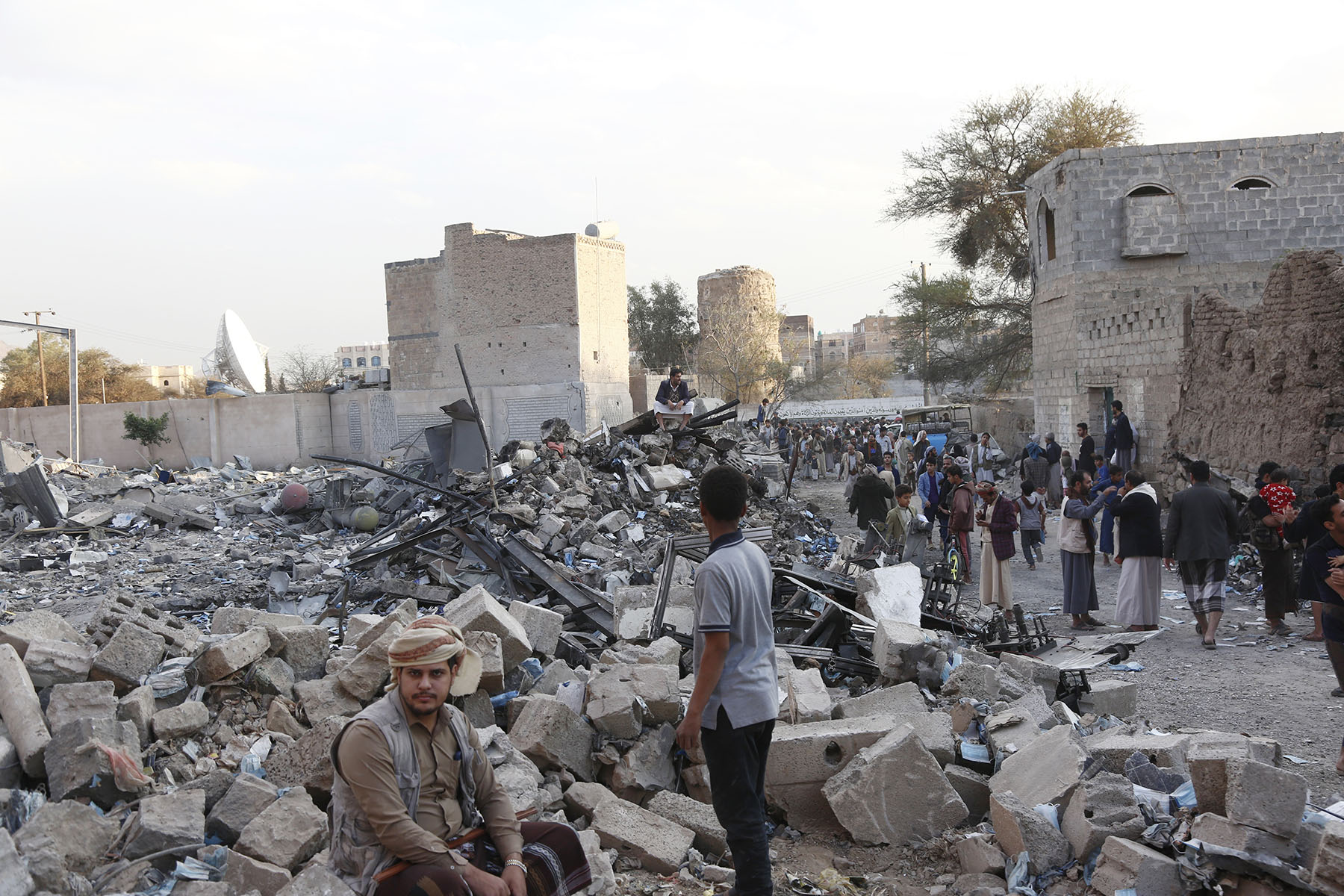Michael J. Willis teaches contemporary Maghreb politics at St Antony’s College at the University of Oxford. He is also the author of "Politics and Power in the Maghreb: Algeria, Tunisia and Morocco from Independence to the Arab Spring" and "The Islamist Challenge in Algeria: A Political History."
Editor's note: The following is adapted from Algeria: Politics and Society From the Dark Decade to the Hirak, recently published by Hurst.
On April 2, 2019, 82-year-old Abdelaziz Bouteflika announced his resignation as president of Algeria, under pressure from the powerful army following weeks of mass protests. His departure and the circumstances surrounding it closed a chapter in the country's history that had lasted for the previous two decades. It was a chapter that had been initiated by three noticeable changes in leadership, society and the economy in Algeria around the turn of the millennium.
Bouteflika's election as president in April 1999, a position he would hold for exactly 20 years until his forced resignation in 2019, was the first and most obvious of these changes. The second was the steady climb in the international price of oil that began in the second half of 1999 and continued for well over a decade, transforming the finances of the Algerian state—a rentier economy that had long been dependent on the country's extensive oil and gas resources. Finally, there was the perceptible decline in the levels of violence that had marked the "dark decade" of civil war in the 1990s, falling steadily around and especially after the turn of the millennium. Collectively, these three developments allowed Algeria to make something of a break with the turmoil and pain of financial crisis, uncertain political leadership and, most prominently, a bitter and bloody conflict resulting from an aborted attempt to introduce multiparty politics.
Toward the middle of the second decade of the new millennium, striking changes occurred in two of the three defining features of this period. In April 2013, Bouteflika suffered a major stroke, which, coming on top of his already declining health since 2005, physically incapacitated him as president to the point that he was rarely seen in public thereafter. Of much more long-term consequence was the steep fall in the international price of oil, starting in 2014, as it lost more than 70 percent of its value in just 18 months. This placed a huge, dark cloud over not just Algerian state finances but also future social and political stability, given the importance of vast increases in state spending on salaries, job creation, housing and infrastructure over the previous decade-and-a-half, funded by revenues from buoyant prices for oil and gas. There were also fears that renewed financial woes might undermine the status of the third development that had marked the beginning and course of the Bouteflika presidency: that of the decline in the levels of violence that had characterized the civil conflict of the 1990s.
State largesse had played a role in securing the surrender and continued passivity of members of the Islamist groups that had taken up arms against the government in the early 1990s, after the government annulled elections that the National Salvation Front, an Islamist party, was set to win. Generous official financial compensation had also helped soothe the anger and resentment of victims and their families on all sides of the conflict, which killed tens, by some estimates hundreds of thousands, of civilians. Some resurgence in the animosities that had caused the war and resulted from it could not be dismissed with the ending of the palliative of state aid, especially given that no systematic public recognition and accounting of the conflict had ever occurred. The weakness of both the formal political opposition and organized civil society indicated that they would be unable to marshal and channel the popular grievances that would inevitably develop, especially when the looming financial crisis began to be felt more materially. It seemed likely that this discontent would manifest itself in unstructured, even anarchic ways, starting locally, in a pattern that had already been developing across Algeria at low levels. Given the lack of political parties and organizations to direct it, it could well turn increasingly violent.
The enduring commitment to fully peaceful protest became a badge of honor for the Hirak, which saw itself as dispelling the entrenched perception of Algerians as naturally inclined toward violent conflict.
- Michael J. Willis
Social and political tensions did indeed erupt onto the streets, in 2019, but these took a shape and character few had anticipated. In notable contrast to protests over the previous decades, the mass protests starting in 2019 did not seek to articulate either a well-established and defined ideological platform, or one linked to assertions of linguistic, cultural or religious identity. To much surprise, Islamists, Berberists, leftists and women's rights activists were all present alongside each other in the protests and demonstrations in the streets of Algiers and other cities and towns. They were united in a central demand for the departure, first, of Bouteflika as president and, thereafter, of the rest of the entrenched and shadowy Algerian political elite—what many Algerians call le pouvoir, or the powers that be. Even more astonishing, to outside observers in particular, was the near complete absence of any violence from the protests, despite their enormous size and evident diversity. The protesters also not only refrained from damaging the streets and buildings they marched through, but were even seen to improve them by mounting clean-up campaigns after demonstrations had concluded each day.
The diverse, peaceful and civic-minded character of the protests evoked memories of the early days of the other mass protest movements that had flourished elsewhere across the Middle East and North Africa in 2011, in what became known as the Arab uprisings or Arab spring. However, Algeria's protest movement, called the Hirak, soon distinguished itself from other, earlier movements in the region by sustaining these trends over the weeks, months and eventually even years that followed. Such an achievement was remarkable in its own right, but was of special note in a country that was widely known for a recent history of particularly brutal violence. That history encompassed not just the "dark decade" of the 1990s, but also the long, bloody struggle for independence from France in the 1950s and 1960s.
This had led to a widespread trend in many journalistic and even some academic narratives of Algerian history to characterize it as nearly unremitting bloodletting and conflict that had consequently forged a population inherently predisposed to acts of violence when confronted with political crises and problems. These narratives not only ignored the very particular and different contexts of the 1990s and the 1950s, but also betrayed a dubious stereotyping and essentializing of a whole society. Highlighting and criticizing them in 2005, historian James McDougall observed that "no ingrained societal or political structure of violence, as an innate characteristic or determining law of history, inherently precludes the creation of alternatives. However difficult such choices are and however unlikely such alternatives may appear given the circumstances of the past decade [in Algeria], they undoubtedly remain possible."

The enduringly peaceful nature of the Hirak protests that emerged in 2019 fully bore out the prescience of this observation, as it created not just an alternative, but one diametrically opposed to that which was supposedly ingrained in Algerian society. Moreover, it was no accident or coincidence but rather an undeniably explicit and conscious choice of those participating in the marches, who made the peaceable nature of their protests one of their two defining features, alongside the commitment to persistence. Nor was the forswearing of violence some carefully calculated tactic by the Hirak's senior leadership. The very absence of any such leadership, bemoaned in other contexts in the Middle East and North Africa, further emphasized how organic a sentiment this was among the hundreds of thousands of Algerians who took part in the protests.
The conscious choice of Hirak participants to actively reject and move away from a past experience that had been widely assumed to have somehow defined Algerians confirmed their agency in the face of historical legacies that they were supposedly powerless to resist. Indeed, the enduring commitment to fully peaceful protest became a badge of honor for the movement, which saw itself as dispelling the entrenched perception of Algerians as naturally inclined toward violent conflict. Algerians' bitter experience of bloodshed and turmoil, rather than making them more prone to repeating it, had created a resolve to avoid it at all costs, a conclusion that should not be so surprising. The Hirak thus displayed the dynamism and sense of agency with which Algerians have dealt with the historical legacies they have been left with. Many slogans and banners of the Hirak marches in 2019 referred to the Algerian struggle for independence from France, as the ideals of the national revolution—not least the deep conviction that the revolution and the consequent Algerian state had been created by and thus belonged to the ordinary people—were very much part of the protest movement.
The Hirak's persistence was its other remarkable characteristic, sustaining its mass weekly marches across the country and especially in Algiers for over a year. It was only the arrival of the COVID-19 pandemic that forced a voluntary suspension of the protests in March 2020. The resumption of large-scale protests across Algeria's main cities in February 2021 confirmed that the mass movement and the demands that had driven it had not disappeared during its year of absence from the streets. Its renewed suspension under pressure from both the authorities and the pandemic in the summer of 2021 raised questions as to whether its existence and influence would become a genuine inflection point in contemporary Algerian history. Its failure to re-emerge a third time in 2022 was fundamentally due to a concerted campaign of arrests and repression by state authorities.
With the effective defeat of the Hirak by the state, other popular movements will likely take its place as Algerians seek to secure not just a better political leadership and a better life for themselves, but a future that they fervently believe is owed to them.
- Michael J. Willis
With that state crackdown, the Hirak has ultimately also failed in its objective of securing a wholesale replacement of the political leadership and recasting the political and social order in Algeria, to make it more representative, accountable and effective. Even if, as hoped and planned for by its still-substantial support base, the Hirak is revived for a third time, its twin principles of persistence and non-violence could fray over time, leading the demonstrations to slowly dwindle or stray into less peaceable forms of protest. That this has not yet happened is substantially due to the participants' determination that Algeria should not follow the fate of so many of the protest movements that flourished across the region in the early months of 2011, despite the clear parallels. Indeed, there is a strong conviction that Algeria is not simply bucking a regional trend, but actually forging a new one, which the rest of North Africa and the Middle East may follow. As many Algerians are keen to assert, Algeria has more frequently been a leader and trend-setter than a follower in the region.
Determination alone is unlikely to secure the changes that the Hirak sought. Despite a fierce belief in the uniqueness of Algeria, parallels with the failure of more recent mass protests to remove or forestall authoritarian systems beyond the Middle East—in Myanmar, Belarus and Hong Kong—cannot be ignored. Nearly four years on from the start of the Hirak, the Algerian political order remains fundamentally intact and unchanged, despite the large-scale turnover of personnel that occurred after Bouteflika's resignation. The "new"—in reality, recycled—figures who have assumed the formal positions of power in the system—President Abdelmadjid Tebboune and the army's powerful chief of staff, Gen. Saïd Chengriha, among others—show no real intent to replace or meaningfully reform the opaque and sclerotic power structures they have inherited.
Despite seeming to define the Algerian political system, these structures are profoundly unsuited and unprepared to deal with the challenges on the horizon, already exemplified in the effects of the collapse in state revenues from oil and gas. The sharp rise in international energy prices over the past year, and especially since Russia's invasion of Ukraine, has certainly eased pressures on state finances. But years of underinvestment, rapidly expanding domestic consumption and the more long-term global move away from fossil fuels all mean that Algeria will struggle to turn higher energy prices into much more than a temporary respite. With the effective defeat of the Hirak by the state, other popular movements will likely take its place as Algerians seek to secure not just a better political leadership and a better life for themselves, but a future that they fervently believe is owed to them after the sacrifices of the anti-colonial struggle of the 1950s and the horrors of the 1990s.









